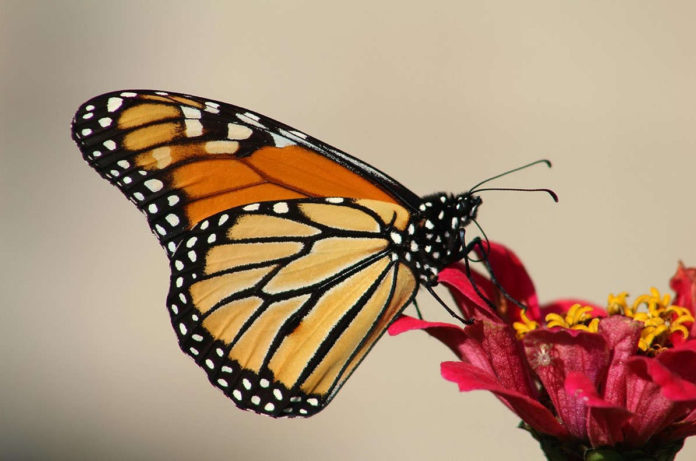Dear EarthTalk: What is the status of the monarch butterfly in the U.S. and is it listed as threatened or endangered? — M. Smith, Raleigh, NC
The monarch butterfly, known for its awe-inspiring migration across North America, has become a symbol of both ecological wonder and environmental decline. Once abundant across the continent, their numbers have plummeted in recent decades, raising concerns about the species’ long-term survival.
In 2014, the Center for Biological Diversity (CBD), a leading conservation group, petitioned the U.S. Fish & Wildlife Service (FWS) to list the monarch as “threatened.” FSW launched a review of the butterfly’s status, concluding six years later that listing was warranted although other species took priority. In 2022, CBD filed a federal lawsuit and won a settlement calling for the government to decide whether to list monarchs by late 2024, which FSW did in December, finally granted “threatened” status to the species.
The monarch’s eastern population, which migrates from the U.S. and Canada to central Mexico for the winter, has experienced a staggering 80 percent drop over the past 20 years, largely due to habitat loss, especially the destruction of milkweed—the sole food source for monarch larvae. The widespread use of herbicides and pesticides kill both milkweed and other pollinator-friendly plants. Climate is compounding the issue by altering the availability of suitable habitats, affecting migration patterns. The monarch’s western population migrates along the U.S. West Coast to winter in California, and has also seen a drastic decline. It has not yet been listed as threatened or endangered by FWS, but the western monarch is still considered to be in serious jeopardy, with some estimates suggesting a 99 percent decline since the 1980s.
Being listed as “threatened” means that while monarchs are not yet in immediate danger of extinction, their populations are at significant risk. This status has prompted federal agencies to prioritize monarch conservation, leading to a variety of initiatives aimed at halting or reversing the decline. FWS has created a recovery plan, which includes restoring migratory and breeding habitats, reducing pesticide use and raising public awareness about the importance of monarchs and pollinators in general.
Despite official recognition of the problem and action, habitat destruction continues at an alarming rate, exacerbated by logging and urban sprawl. In response, conservation and governmental agencies and researchers are all working toward restoring monarch habitats and promoting the planting of milkweed.
Everyone can play a role in helping the monarchs. Readers can help by planting milkweed in your garden, backyard or community space. You can also reduce pesticide use in your yard and choose organic gardening practices. Support organizations working to protect monarch habitats and advocate for policies that protect pollinators and raise awareness about their decline can also create broader change.
CONTACTS: FSW, https://www.fws.gov/initiative/pollinators/monarchs; Monarch Watch, https://www.monarchwatch.org; Monarch Joint Venture, https://monarchjointventure.org.
EarthTalk® is produced by Roddy Scheer & Doug Moss for the 501(c)3 nonprofit EarthTalk. See more at https://emagazine.com. To donate, visit https://earthtalk.org. Send questions to: qu******@*******lk.org.




